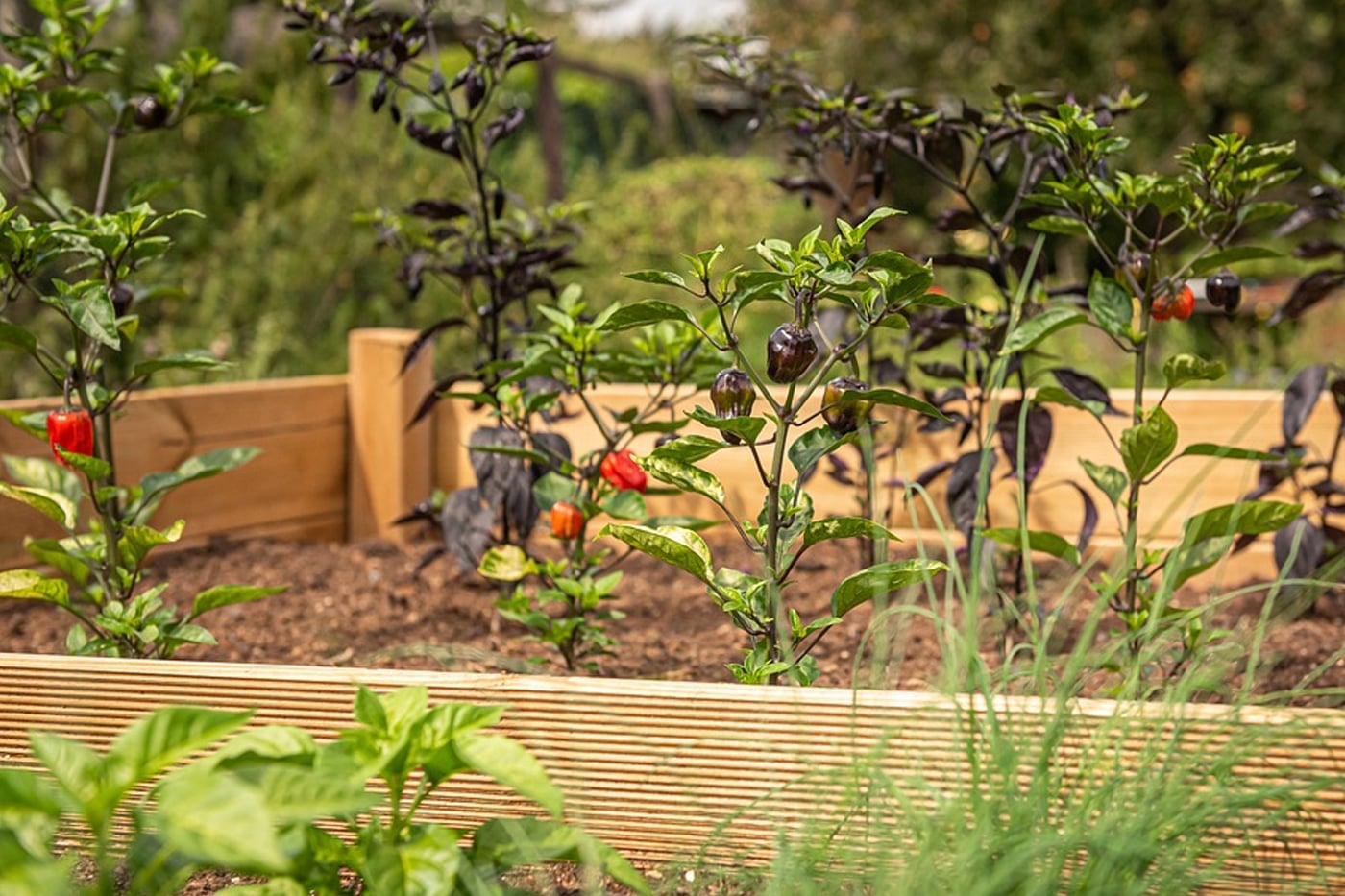Raised beds are flexible; these can be used in a small garden or commercial farming. If you want to step up your gardening and learn more about farming using raised beds, this guide is for you! Read below to learn more about commercial raised bed farming and various techniques you can implement to boost production:
Contents []
What is Raised Bed Farming?
Commercial raised bed farming is an agricultural concept of building and using raised beds to grow different crops for profit. Raised beds hold the soil above ground level and are covered with mulch to protect and insulate the soil from the elements. Because the soil is protected, growing different plant varieties in raised beds is much easier than traditional in-ground farming.
Benefits of Commercial Raised Bed Farming
While commercial raised bed farming will cost more in construction, it has a lot of benefits. For one thing, it extends the growing season, enabling growers to start early and produce greater yield come harvest season. Because the soil is protected from the elements, you can even plant late in the season and enjoy bits of winter gardening!
Raised bed farming also makes maintenance kinder on the joints. You don’t have to bend down or kneel when removing weeds and unwanted debris from the soil. The growing soil isn’t prone to compaction and erosion because it is confined in a protected space. You also enjoy greater yield because the great soil texture makes it easier for plants to take roots.

Raised Bed Designs for Commercial Farming
Raised beds come in various designs, but for commercial farming, there are two popular styles: raised beds without barriers or support and raised beds with a framework.
Unsupported raised beds are flat top mounds of enriched soil about 6 to 8 feet. This type of raised bed is most similar to a garden plot. Because it’s easy to make, unsupported raised beds are popular for large-scale farming.
Supported raised beds are rectangular or square structures made from untreated wood, stone, brick, and thick plastic that form a barrier around the growing soil. The barrier is filled with enriched soil, ready to use for farming. The raised bed size will vary, and the right size will depend on how big or small your farm is.
While there is no standard size on raised beds, the width shouldn’t be more than 4 feet and about 8 to 24 feet long. The depth should be at least 6 inches high to enable many crops to develop strong roots. As long as the width is correct, you can create raised beds in different shapes or lengths.
You can buy ready-made raised beds or make one yourself using reclaimed wood, wooden blocks, concrete blocks, cinder blocks, rocks, and bricks. The best construction material for commercial raised beds is rot-resistant lumber like cedar and oak. But these materials are pricey. You’ll need a drill, measuring tape, and level to create a raised bed if you are making one yourself.

Setting Up the Raised Beds for Commercial Farming
A well-planned commercial farm ensures a higher yield and a longer growing season. Here are essential factors to consider when setting up a commercial farm using raised beds:
Sunlight exposure: Choose a site that gets bright light throughout the day and some shade in the afternoons. These places are the best for growing a variety of vegetables and fruits. Vegetables and herbs require more sunlight, about 6 to 8 hours daily. If that’s not possible, choose a spot with morning light or grow cool-season, shade-tolerant plants.
Proper irrigation and drainage: Irrigation and drainage are crucial in growing plants in raised beds. Choose a site with appropriate and suitable drainage. Install an easy-to-maintain irrigation system like a low-volume drip system to conserve water and prevent wet soil. Lay the irrigation tape while building the raised beds. Sprinkler systems are standard in commercial farming, but these are expensive to install, harder to control, and increases water consumption.
Choose the best growing medium: Standard potting soil is ideal for growing various fruits and vegetables. You can also use commercial mixes for vegetables, although these can be expensive for large-scale farming. Regular garden soil won’t do; it doesn’t have the best texture for growing crops, much more large-scale agriculture. A blend of soil, soilless mixes, and compost are great mediums for growing crops. Use well-draining soil enriched with mature compost for best results.
Crops to grow: Virtually any plant can be grown in a raised bed commercial farm as long as the ideal growing environment has been met. Plants like carrots, potatoes, green leafy vegetables (lettuce, kale, cabbage, broccoli), and drought-resistant vegetables will do well in raised garden beds. Make sure the raised bed’s depth is ideal for growing plants with deep, complex roots.
Fruiting vegetables like peppers, cucumbers, and tomatoes will do great on a raised bed farm. Shallow-rooted vegetables and grain crops, like wheat, corn, etc., are a little tricky to grow in a raised bed because of their size and the way their roots grow. This is the reason why small grains are often grown in-ground.
Are you thinking of stepping up your gardening to produce more crops for profit? Finding the right raised bed size is key to successful commercial farming! Find a supplier that provides durable raised beds made from untreated wood. Shop here to give raised bed farming a try!



